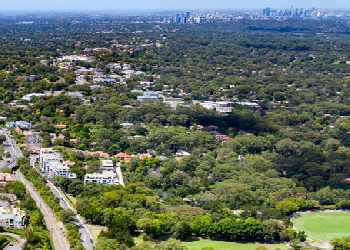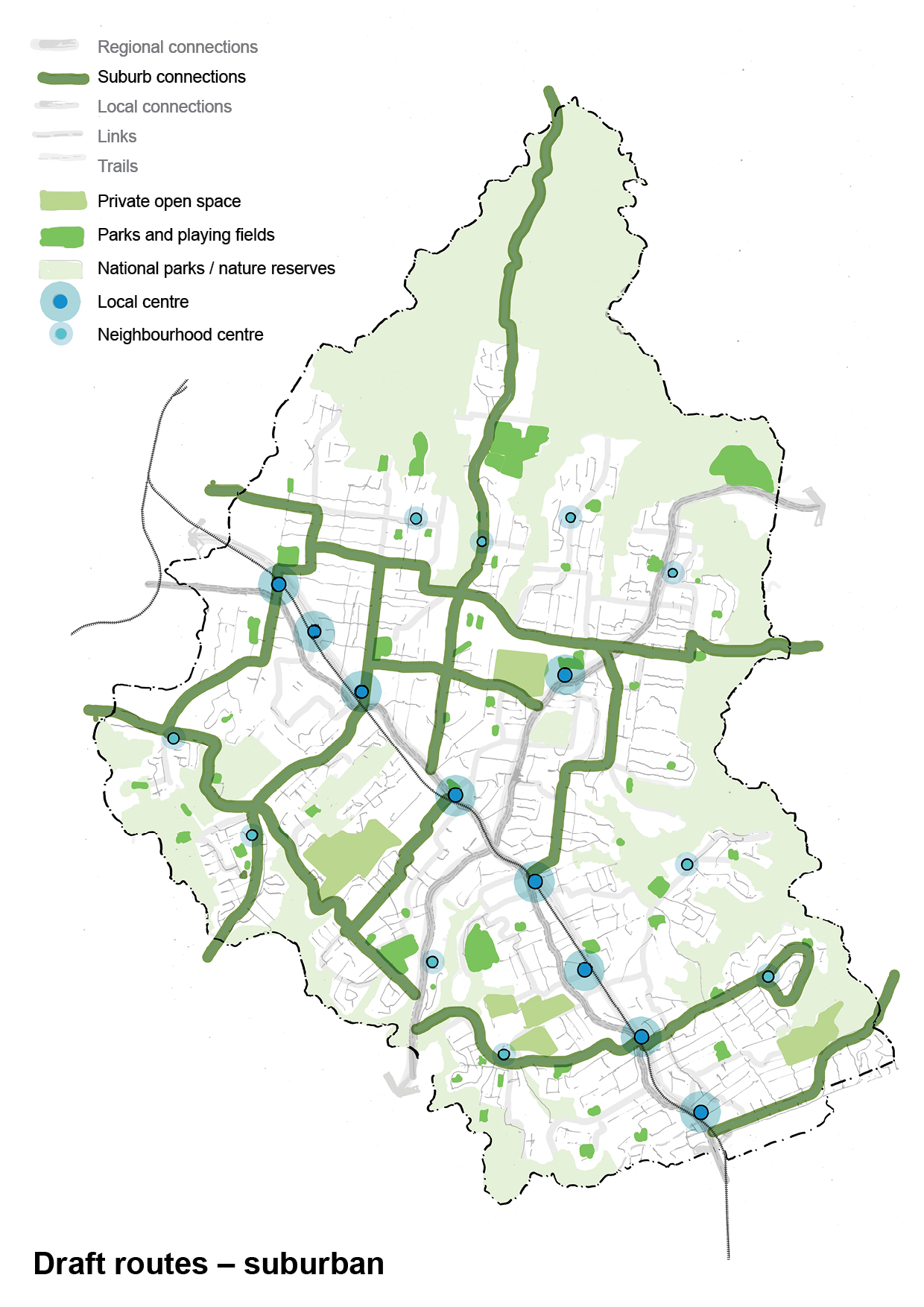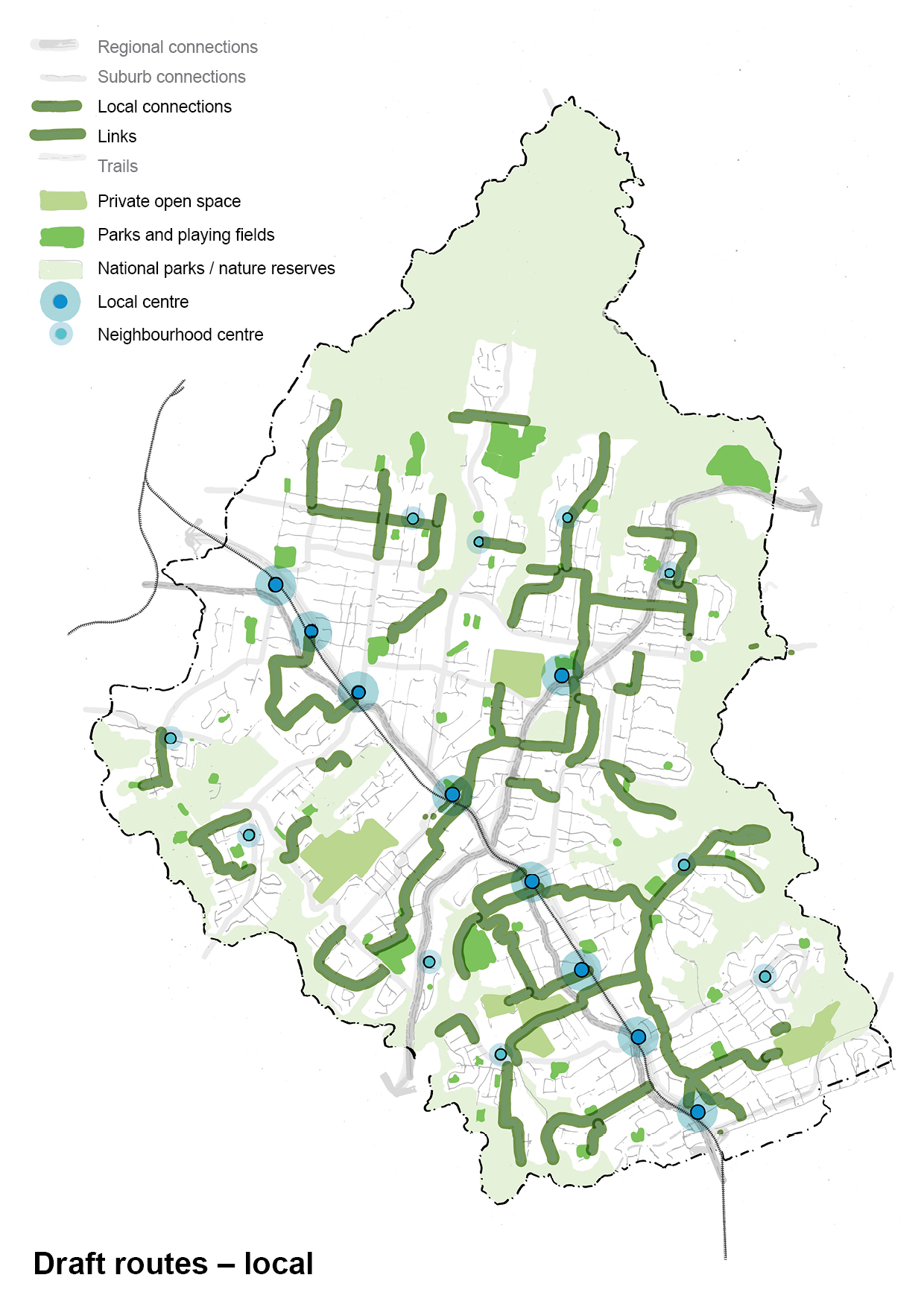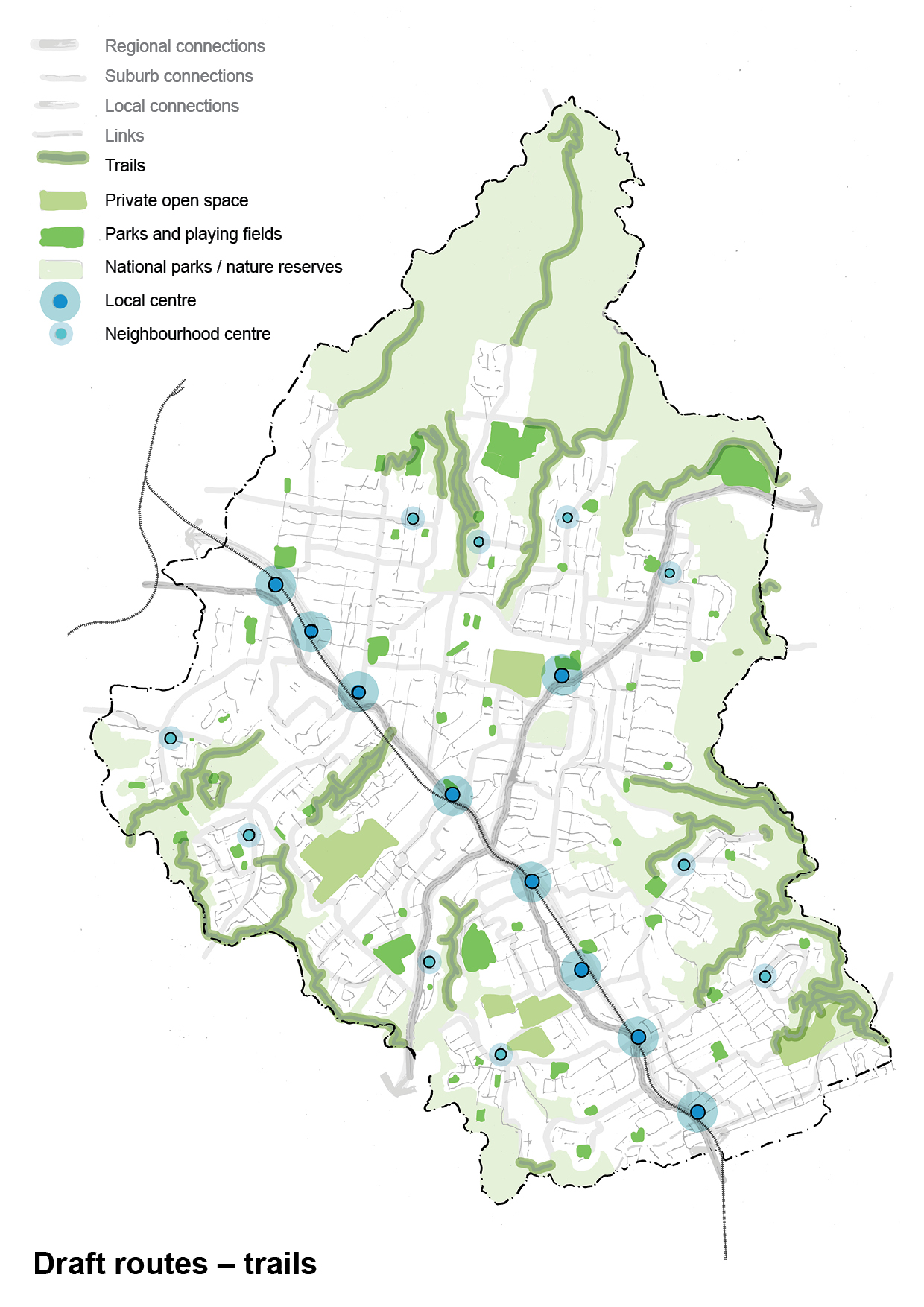About the strategy
The draft Ku-ring-gai Green Grid Strategy outlines the strategic context and vision and objectives for a Green Grid across the council area.
In simple terms, the Green Grid can be described as “a network of corridors to connect green spaces and centres”. These corridors are made up of paths, bike lanes, trails, and vegetation. This means they serve the dual purpose of allowing people to walk or use active transport to get between open spaces and centres and serve as ecological corridors to promote biodiversity.
The draft Strategy also shows a series of proposed of Regional, and Suburban routes, and Local and Trail Links, along with the evidence base to support these proposed links.
Objectives of the Green Grid in Ku-ring-gai
1) Increased canopy cover across the LGA
Ku-ring-gai benefits from a well-established and extensive urban tree canopy. Pressures from development, climate change and risk mitigation all impact on how this can thrive and expand. Clear targets for the delivery of an improved urban forest canopy are essential for ensuring the longevity and success of our urban forest. Green Grid projects are fundamental to achieving this.
2) A consolidated active transport network providing comfortable walking and cycling routes
Active transport is critical in sustainable progress towards meeting climate change mitigation targets. Council is pursuing opportunities to develop the best possible links that provide the infrastructure to support both walking and cycling transport options. Integral to the comfort of these routes is shade and an aesthetically pleasing environment, which co-ordinated street tree planting as part of the Green Grid can deliver.
3) Walkable connections between points of interest in the LGA
Local Centres, historic sites, parks and recreation facilities all provide points of interest within the LGA which residents want to access. The Ku-ring-gai Green Grid will endeavour to make walking the preferred way to get to, from and between these points by improving green infrastructure interventions along these routes, ensuring they are shaded, pleasant and accessible.
4) Enhanced biodiversity and riparian corridors
Fundamental to the Green Grid is the enhancement and protection of our existing natural systems. These need to be supported and expanded wherever possible. The balance needs to be struck between creating new connections to re-link patches of bushland and allowing the appropriate level of access to sensitive areas.

.jpg)












